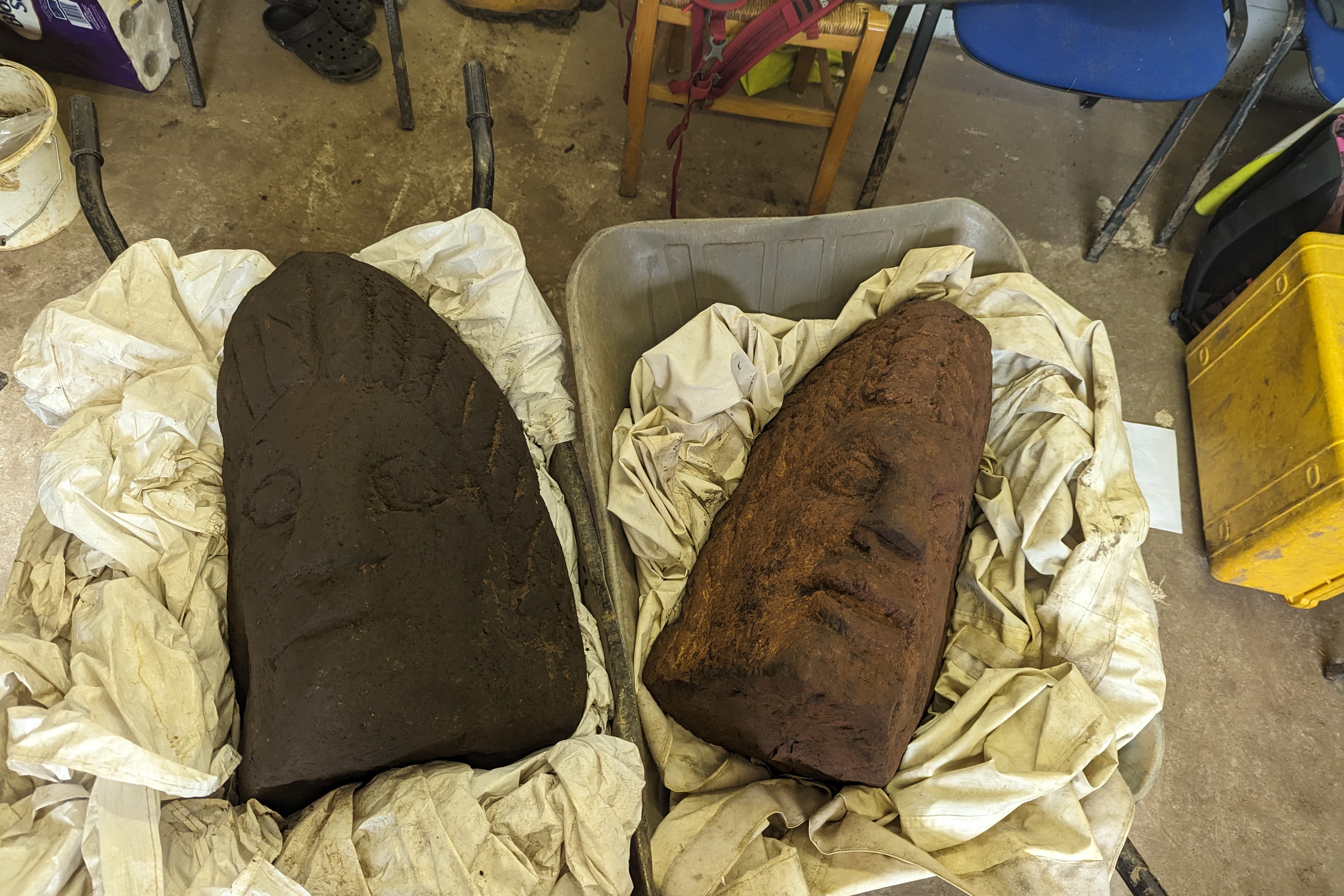Rare Roman sculptures unearthed in Cumbria
The artefacts were discovered during an archaeological dig in Carlisle.

Your support helps us to tell the story
From reproductive rights to climate change to Big Tech, The Independent is on the ground when the story is developing. Whether it's investigating the financials of Elon Musk's pro-Trump PAC or producing our latest documentary, 'The A Word', which shines a light on the American women fighting for reproductive rights, we know how important it is to parse out the facts from the messaging.
At such a critical moment in US history, we need reporters on the ground. Your donation allows us to keep sending journalists to speak to both sides of the story.
The Independent is trusted by Americans across the entire political spectrum. And unlike many other quality news outlets, we choose not to lock Americans out of our reporting and analysis with paywalls. We believe quality journalism should be available to everyone, paid for by those who can afford it.
Your support makes all the difference.Two rare Roman head sculptures have been unearthed by volunteer archaeologists during a dig in Carlisle.
The sandstone artefacts, three times the size of human heads, were found during excavations of a huge Roman bathhouse close to Hadrian’s Wall in the city, once a northern outpost of Rome’s huge empire.
They were found abandoned at the edge of what was once a cobbled Roman road and are believed to date back as far as 200AD.
Frank Giecco from the archaeology firm Wardell Armstrong, which is working at the site, said: “If you are an archaeologist you don’t find many things like that in your career.
They have literally only just been lifted out of the ground so there’s been no detailed analysis of them yet
“We think they are late second, early third century AD.
“They have literally only just been lifted out of the ground so there’s been no detailed analysis of them yet.”
The discovery was made earlier this week on the dig site, which is staffed by about 400 local volunteers.
The heads add to a growing list of Roman artefacts found there, including carved gemstones, since the dig began in 2021.
Uncovering Roman Carlisle has received £56,700 from the UK Government through the UK Shared Prosperity Fund.
The site will be active and open to the public between Monday and Saturday, with tours of the site held daily until the dig finishes on June 24.